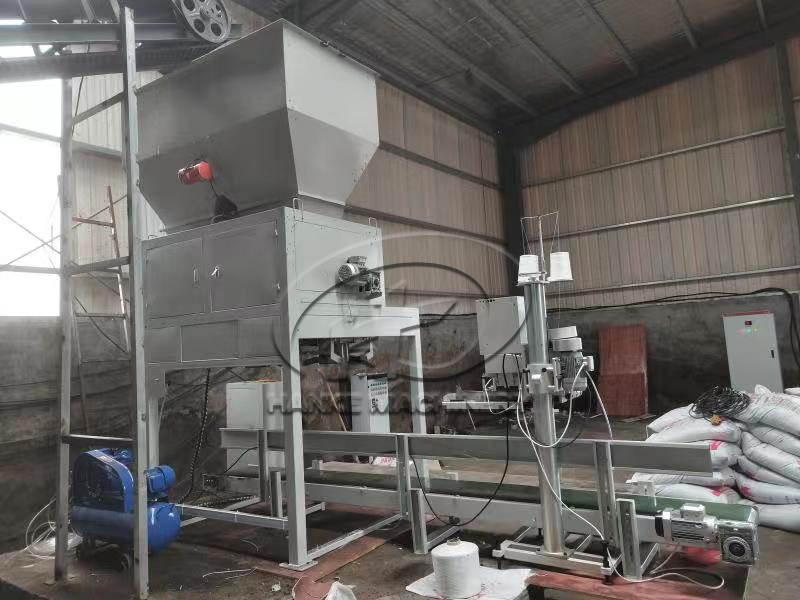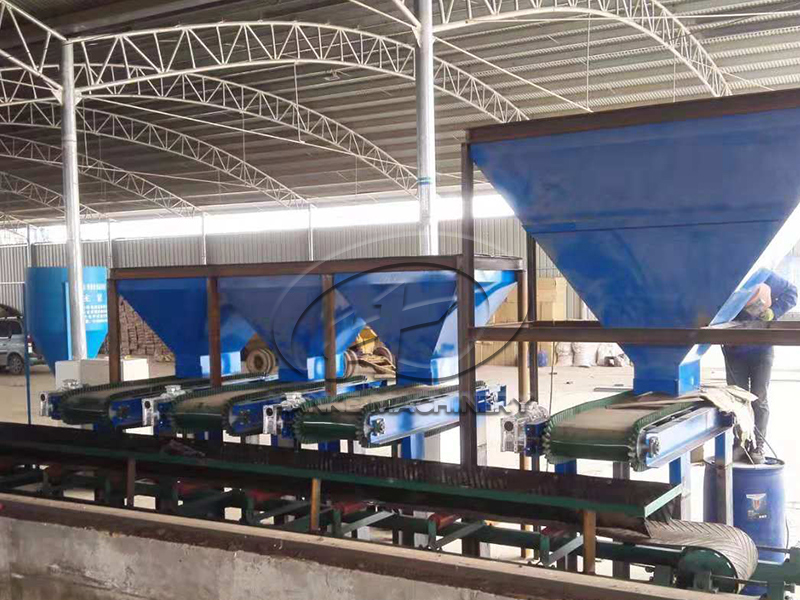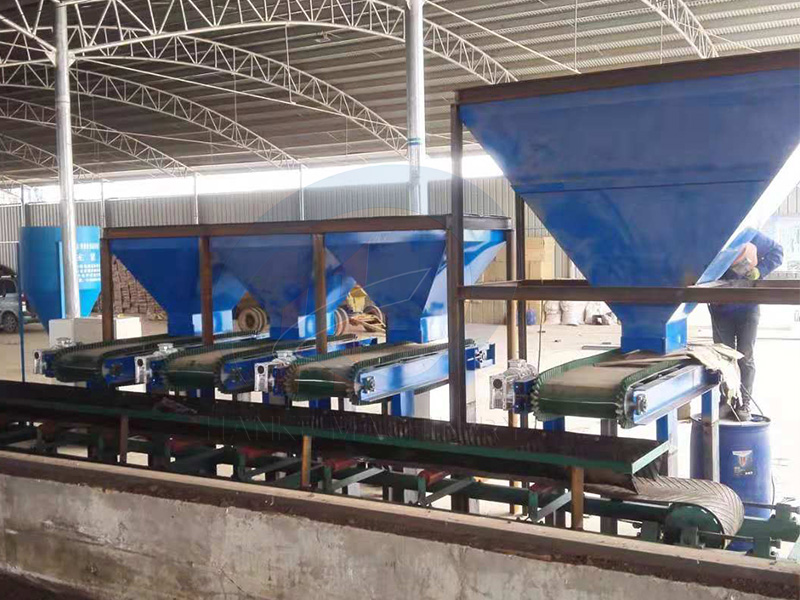Update time : 2025-10-13 Publisher:Zhengzhou Hanke Machinery
Corn feed mixer for family workshops, the core requirements are "low cost, easy operation, suitable for small production capacity, and simple maintenance". There is no need to pursue complex fully automatic configurations. The focus is on "meeting self-use and small-scale external sales needs, reducing labor burden, and avoiding idle waste". The following is a specific selection method in four steps: "clarify requirements → core selection parameters → key points to avoid pitfalls → high cost-performance configuration recommendations".
I.clearly identify the core needs of the family workshop (to avoid blind selection of models)
The corn feed produced by family workshops is mostly for "self-use (such as raising chickens, ducks, pigs, cattle and sheep)" or "small-scale external sales (serving nearby individual customers)". The demand characteristics are distinct. Before selecting a model, three key pieces of information need to be determined first:
1.Capacity demand: "Just enough for daily use is fine. We don't aim for large-scale production capacity."
The daily feed consumption of a family workshop is usually between 0.5 and 2 tons (corresponding to the scale of breeding: such as 500 laying hens or 50 fattening pigs). When converting to "hourly production capacity", it is advisable to choose 0.2 to 0.5 tons per hour. If a device with a capacity of 1 ton per hour or more is selected, it will lead to "long idle time of the equipment and high energy consumption" (for example, if only 1 ton of feed is needed per day, a 0.5-ton-per-hour device can complete the task in 2 hours, while a large-capacity device will finish in 1 hour and then idle for the rest of the time, wasting electricity).
2. Types of raw materials: "3 to 5 kinds mainly, no need for too many varieties"
The formula for corn feed is relatively simple, with the core ingredients mostly being "corn (main ingredient, accounting for 60%-70%) + soybean meal / bran (protein source, accounting for 15%-20%) + premix (vitamins, minerals, accounting for 1%-5%) + a small amount of supplementary ingredients (such as rice bran, fish meal, optional)", totaling 3-5 ingredients. Therefore, there is no need to choose equipment with more than 8 hoppers; 4-5 hoppers can meet the requirements, reducing equipment costs and operational complexity.
3. Automation requirements: "Semi-automatic is preferred, manual as a supplement"
Family workshops usually have limited manpower (operated by 1-2 people), so there is no need to pursue "fully automatic feeding + PLC control" (which is expensive and complex to operate). It is the most cost-effective to choose a semi-automatic model with "manual feeding + automatic weighing + simple mixing".
Manual feeding: Manually pour raw materials into the scale hopper (main materials such as corn and soybean meal can be crushed in advance and transported with a small trolley, without the need to install a screw feeder, saving 10,000 to 20,000 yuan).
Automatic weighing: The equipment automatically completes the precise weighing of each raw material, avoiding the errors of manual weighing (such as the small amount of premix, which is prone to errors when weighed manually).
Simple mixing: After the ingredients are prepared, the equipment comes with a small mixing bin (with a capacity of 100-200kg). After thorough mixing, the material can be directly discharged and bagged without the need to purchase an additional mixer.

II.Lock in three core selection parameters (determining "usability and durability")
The ingredient mixer for family workshops does not require complex configuration, but three core parameters must meet the standards; otherwise, problems such as "poor accuracy, easy damage, and feed contamination" may occur.
1.Ingredient accuracy: "Main ingredient error ≤ 1%, premix error ≤ 0.5%"
Main ingredients such as corn and soybean meal: The weighing error should be ≤ 1% (for example, when weighing 100kg of corn, the actual weight can be between 99-101kg, which does not affect the nutritional balance of the feed).
Premixes and trace additives: The error must be ≤ 0.5% (for example, when weighing 1 kg of premix, the actual weight should be between 0.995 kg and 1.005 kg to avoid malnutrition in animals due to insufficient dosage or poisoning due to excessive dosage).
Selection tips: Prioritize "double-sensor scale hoppers" (which offer higher accuracy and stronger anti-interference capabilities compared to single-sensor models; for instance, when weighing corn, even if the material flow is uneven, it can still ensure accuracy). Avoid low-cost models featuring "single sensor + ordinary display" (these have a fast accuracy drift and require calibration every 1-2 months).
2. Material: "The parts in contact with the materials must be made of 304 stainless steel."
Corn feed is prone to absorbing moisture during storage and weighing, especially in humid southern regions. If the material is inappropriate, it may lead to "rust contamination of the feed" or "raw material clumping and sticking to the wall".
It is mandatory that the inner walls of the scale hopper, the mixing bin, and the discharge port must be made of 304 stainless steel (which is corrosion-resistant, easy to clean, and can be wiped clean with a cloth to prevent the accumulation and hardening of corn flour residue).
Allow for compromise: The equipment rack (non-contact material part) can be made of "ordinary carbon steel + painted" (to reduce costs, as long as it does not rust, and daily moisture prevention is observed).
Absolutely avoid: "All carbon steel material" (only surface painted, it will rust in 1-2 months, corn flour sticks to the rust, which can easily cause intestinal diseases in animals after feeding).
3. Operational difficulty: "Simple interface, easy for one person to get started"
Most of the operators in family workshops are farmers, and they have no professional experience in operating equipment. Therefore, the operation of the equipment must be made as simple as possible.
Control interface: Select "button-type meter" (instead of complex touch screens), with clear labels (such as "Corn Bin", "Soybean Meal Bin", "Start Weighing", "Stop Mixing", etc. in Chinese), no programming learning required.
Fault prompt: Equipped with simple fault lights (such as "Sensor Fault", "Material Gate Not Closed" with red lights on), facilitating quick problem identification (for instance, if the material gate is not closed properly and the red light is on, simply close it manually without the need to contact the manufacturer for repair).
No need for linkage: Do not select the "Linkage with the pellet machine" function. (Most family workshops follow the process of "ingredient preparation → mixing → manual feeding into the pellet machine", so the linkage function is not needed and it would increase the cost by 10,000 to 20,000 yuan.)
III. Finally: Two Practical Tips for Purchasing
Give priority to "local or nearby manufacturers": It is convenient for on-site installation and commissioning (many manufacturers offer free on-site installation). In case of equipment problems later (such as stuck feed doors or inaccurate sensors), the manufacturer can provide on-site maintenance within 24 hours, avoiding delays in feed production.
Request for "Trial Run + Training": Before purchase, ask the manufacturer to conduct a trial run with corn and soybean meal to test the accuracy on site (weigh three times to check if the error meets the standard); after delivery, have the manufacturer provide operation training (such as how to calibrate and how to clear blockages), ensuring that one person can operate independently.
Summary
When choosing a corn feed mixer for a family workshop, the key is to "just enough is fine, not too much or too expensive": a capacity of 0.3-0.5 tons per hour, 4-5 hoppers, 304 stainless steel contact material, semi-automatic operation, and a budget of 15,000-20,000 yuan can meet daily needs while avoiding problems such as poor precision, easy damage, and complex operation. There is no need to pursue fully automatic or high capacity; what suits you is the most cost-effective.

see details +

see details +

see details +

see details +

 Tel:+86 17319777703
Tel:+86 17319777703
 E-mail:hkautomaticpack@foxmail.com
E-mail:hkautomaticpack@foxmail.com
 Address:Xingyang City, Zhengzhou City, Henan Province.
Address:Xingyang City, Zhengzhou City, Henan Province.
Privacy Policy Copyright © Zhengzhou Hanke Machinery Equipment Co., Ltd Co., Ltd.